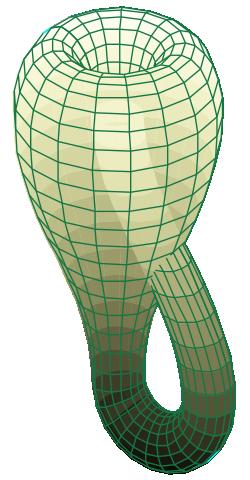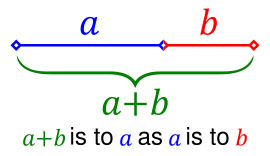The cache is NOT at the posted coordinates.

recursion (ri-kûr'zhen),
n. see recursion.
I was having a conversation with Professor Ouroboros the other day. I made a joke about recursion, but the good professor must not have thought it was so funny. He asked if I understood what recursion was, but before I could answer he started talking really fast. Trying to be a good student, I copied down what he said, word for word. Here it is:
"Recursion is a process in which objects are defined in terms of other objects of the same type. Every recursive process is designed with repetition in mind. Computation of the Fibonacci numbers, for example, is performed recursively. Using some sort of recurrence relation, the entire class of objects can be built up from a few initial values and a small number of rules. Recursion leads to exquisite beauty in mathematics and remarkable mathematical formations in art and nature. Sometimes, recursive behavior can seem rather dull on the surface. In order to  understand recursion, one must first understand recursion. Once upon a time, the Babylonians figured out that they could compute the square root of a number A, by taking the mean value of x and A over x [ = 1/2 (x + A/x) ], and then using the result as the next value of x, and so forth. Newton generalized this method to solve for the fixed point of any differentiable function."
understand recursion, one must first understand recursion. Once upon a time, the Babylonians figured out that they could compute the square root of a number A, by taking the mean value of x and A over x [ = 1/2 (x + A/x) ], and then using the result as the next value of x, and so forth. Newton generalized this method to solve for the fixed point of any differentiable function."
I noticed how he seemed to speak in a very recursive way, at least initially, anyway. He then took a card out of his pocket and handed it to me, which had the following written on it:
This Pangram contains four a's, one b, two c's, one d, thirty e's, six f's, five g's, seven h's, eleven i's, one j, one k, two l's, two m's, eighteen n's, fifteen o's, two p's, one q, five r's, twenty-seven s's, eighteen t's, two u's, seven v's, eight w's, two x's, three y's, & one z.
I counted each letter, hoping to find a hole in his argument. "And exactly one Z, there it is at the end! Very clever," I tried to change the subject. But he just continued on:
"The canonical example of a recursive function is factorial:
factorial(0) = 1; factorial(n) = n * factorial (n-1)
Try this: Pick any number (either whole or fractional, but greater than -1). That's your starting point. Now, here's your only rule: Add 1 and take the square root (use the button on your calculator that says SQRT). Do it again. Keep following the rule. After a while, the calculator display will no longer change. It will read 1.61803 39887 49894 84820... Try it! It doesn't matter what number you start with. The fixed point of this iterative procedure is the golden ratio, phi. The ratio of successive terms of the Fibonacci sequence (0, 1, 1, 2, 3, 5, 8, 13, 21... to get the next number in the sequence, just add the last two numbers) approaches the golden ratio. Furthermore, the golden ratio can be used to compute any value, F(n), of the Fibonacci sequence (without any iteration!) by using Binet's formula:
F(n) = [ phin - (-phi)-n ] / sqrt(5)
Hopefully you can see that the ratio of F(n+1)/ F(n) approaches phi as n gets large."

I was left wondering how Binet got that formula named after him despite the fact that Euler and de Moivre had already discovered it a century before. But by now I was perfectly willing to start this conversation all over again. Much later, after I got home, I pulled out my calculator and discovered a couple interesting things about what the professor had said.
Here's the first thing. Pick a number, x. Multiply it by itself (i.e., square it) and then subtract the original x. (Another way to get the same thing: pick a number, subtract one, then multiply by the original number; i.e., x * [x-1] .) If the difference between x squared and x equals one, then x just happens to be the golden ratio, phi. However, the difference between x squared and x can be anything you want it to be, say Y (or even B).
Here's another iterative process you can easily perform with your calculator:
1. Pick any number A (bigger than -B)
2. Add B, then take the square root
3. Go to Step 2
I picked an A and a B (let's call it B1), and carried out step 2 over and over again. After a while the answer stopped changing. The calculator just kept showing 19.10779 40659... and stopped changing. This appears to be the fixed point of this operation. I chose a different starting value for A and got the exact same result. The funny thing is that no matter what I chose for A, the iterations always provided the same result: 19.10779 40659...
Then I picked a different B (this time we'll call it B2), and again I carried out the iteration many times. This time the answer stopped changing when it got to 7.07647 32189... (it stopped changing well before 20 iterations).
The cache is located at N 37 58.(B1) W 122 32.(B2)
Good luck. If you still don't get it, go here.
 phi = a / b = (a+b) / a
phi = a / b = (a+b) / a
You can validate your puzzle solution with certitude.